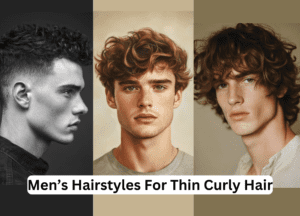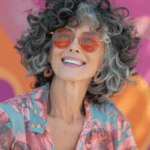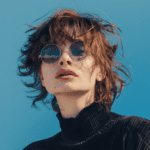The Best Fluffy Pancakes recipe you will fall in love with. Full of tips and tricks to help you make the best pancakes.
ASOIAF Hairstyles: 12 Iconic Styles from the World of Westeros
Welcome back to “LooksandCurls.com,” where we dive deep into the world of hairstyles, from modern trends to timeless styles inspired by literature and pop culture. Today, we’re exploring the fascinating world of A Song of Ice and Fire (ASOIAF) by George R. R. Martin, and how hairstyles play a crucial role in defining characters, cultures, and status in the fantasy realm of Westeros and beyond.
In the rich tapestry of A Song of Ice and Fire (ASOIAF), George R. R. Martin intricately weaves together complex characters, detailed settings, and, yes, even hairstyles that speak volumes about identity, culture, and power. Whether it’s the flowing silver locks of the Targaryens or the warrior braids of the Dothraki, hair is more than just an accessory in this world—it’s a symbol of who these characters are and where they come from. In this article, we’ll explore 12 notable hairstyles in the ASOIAF universe, their cultural significance, and how they can inspire modern looks.
Cultural Significance of Hairstyles in Westeros
In A Song of Ice and Fire (ASOIAF), different regions and cultures have unique hairstyles that reflect their identity, environment, and values. Let’s explore how these styles manifest across the Seven Kingdoms and beyond.
The Dothraki Braids
In the nomadic warrior culture of the Dothraki, long braids are a mark of strength and victory in battle. Each time a warrior wins a fight, they add to their braid, making it longer and more elaborate. To cut one’s braid is a sign of defeat and disgrace. The Dothraki live by the horse and the sword, and their hairstyles are deeply intertwined with their martial prowess. The braids, often decorated with bells and other ornaments, signify a warrior’s journey and triumphs.
The Targaryen Loose Waves
The Targaryens are known for their striking silver-gold hair, often worn in loose, flowing waves that symbolize their mystical Valyrian heritage. Daenerys Targaryen, in particular, is famous for her flowing locks, which emphasize her royal lineage and connection to dragons. The Targaryen hair is a reminder of their ancient and noble lineage, setting them apart from other noble families in Westeros. The loose waves reflect their connection to the dragons and the old magic of Valyria.
Northern Braids
In the cold, harsh North, practicality often dictates style. Northern women like Sansa Stark and Arya Stark wear their hair in simple, practical braids reflecting their environment and the Stark family’s values of honor and resilience. The braids are functional, keeping the hair secure during everyday tasks and in battle. The simplicity of the style mirrors the Stark family’s straightforward and honorable approach to life.
Lannister Golden Curls
The Lannisters, particularly Cersei Lannister, are famous for their luxurious golden curls. This hairstyle reflects their wealth, vanity, and desire for power. The golden curls symbolize the Lannisters’ pride and the opulence of their lifestyle in King’s Landing. The intricate curls are carefully maintained, demonstrating the family’s attention to appearance and their need to project an image of perfection and authority.
Ironborn Knot
The Ironborn favor practical hairstyles like tight knots, reflecting their rugged, seafaring life. Asha Greyjoy (Yara in the show) often wears her hair in a knot, embodying the Ironborn values of strength and independence. The knots are practical for a life spent on ships, symbolizing the Ironborn’s rejection of mainland customs and their embrace of a harsh, self-sufficient lifestyle. The knots also signify their readiness for combat and their constant battle against the elements.
Dornish Exotic Braids
In Dorne, elaborate braids reflect the vibrant and passionate culture of the region. Characters like Nymeria Sand and Ellaria Sand wear intricate braids, often adorned with beads and other decorations, symbolizing their connection to the exotic and diverse culture of Dorne. The braids are both practical for the hot climate and a statement of personal and cultural identity, emphasizing the Dornish love for beauty, passion, and individuality.
Queenly Crown Braids
Queenly crown braids are intricate styles designed to resemble a crown, symbolizing royalty and power. Margaery Tyrell and Sansa Stark (later in the series) adopt these styles to reflect their royal status and ambitions. The crown braids signify authority, elegance, and the burden of leadership. They are a visual representation of the wearer’s position and the political roles they navigate in the royal court.
Braavosi Ponytail
The Braavosi ponytail is a simple, functional hairstyle common among Braavosi fighters, particularly those trained in water dancing. Syrio Forel and Arya Stark (in Braavos) sport this practical style, reflecting the discipline and precision required in Braavosi swordsmanship. The ponytail keeps the hair out of the way during combat, symbolizing a focus on skill and efficiency over appearance.
Silent Sisters’ Shaved Heads
The Silent Sisters shave their heads as a sign of their vows of silence and devotion to the Faith of the Seven. This hairstyle signifies humility, devotion, and a rejection of worldly vanity. The shaved heads set them apart from society, marking their sacred duty of preparing the dead for burial. It represents their complete dedication to their religious responsibilities and their detachment from the material world.
Reach Floral Crowns
In the Reach, hairstyles adorned with flowers reflect the beauty and fertility of the region. Margaery Tyrell and the ladies of House Tyrell often weave flowers into their hair, symbolizing the natural bounty of their homeland. The floral crowns emphasize elegance, natural beauty, and the Tyrells’ connection to the fertile lands they oversee. This style celebrates the prosperity and abundance of the Reach, projecting an image of grace and harmony.
Each of these hairstyles in ASOIAF not only serves an aesthetic purpose but also conveys deeper cultural and personal significance, reflecting the diverse identities and values of the characters and their regions.
Notable Hairstyles in ASOIAF
Here are 12 of the most iconic hairstyles from the ASOIAF universe, each with its own cultural and symbolic significance:
1. Dothraki Warrior Braids


The Dothraki warrior braids are long, intricate styles worn by the fierce horse lords of the Dothraki Sea. These braids are not just for show; they are a deeply rooted cultural symbol, indicating a warrior’s prowess in battle. The longer and more complex the braid, the more victories the warrior has achieved. Cutting off a braid is a sign of defeat and dishonor, making the maintenance of these braids a matter of personal and cultural pride among the Dothraki.
One of the most iconic characters associated with the Dothraki braids is Khal Drogo, a powerful leader of the Dothraki people. His long, flowing braid is a testament to his undefeated status in battle. Drogo’s braid is often depicted as adorned with bells, which jingle as he rides into battle, further enhancing his fearsome reputation. Other Dothraki warriors also sport similar braids, each one a visual representation of their status and strength within the tribe.
2. Targaryen Loose Waves
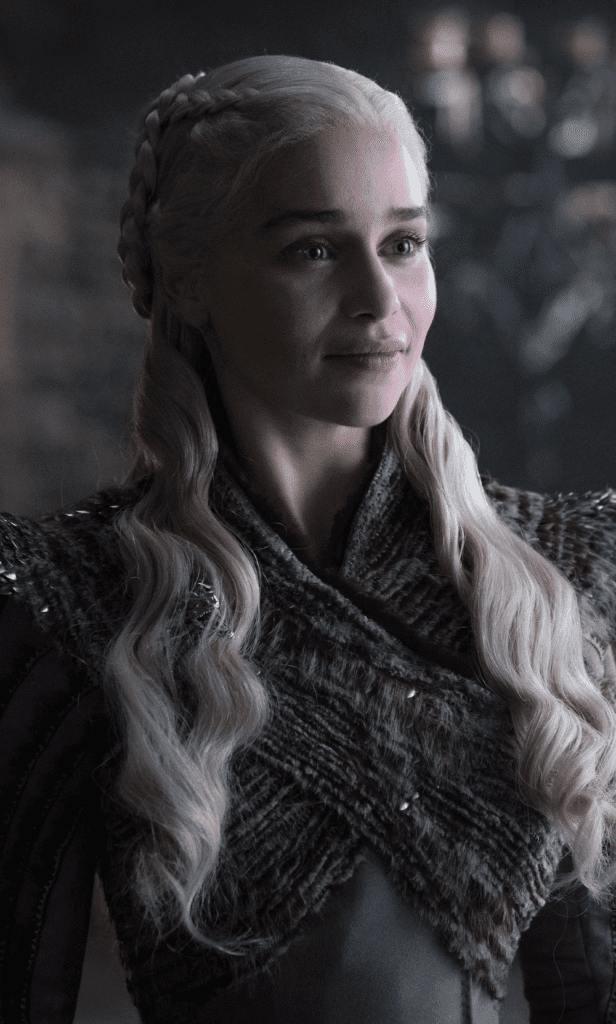
The Targaryen loose waves are characterized by flowing, silver-gold hair that cascades down the back, symbolizing the ancient and noble lineage of House Targaryen. This distinctive hair color is a hallmark of their Valyrian ancestry, setting them apart from the other noble houses of Westeros. The loose, natural waves are often depicted as soft and ethereal, emphasizing the Targaryens’ almost otherworldly presence.
Daenerys Targaryen is the most prominent character associated with this hairstyle. Throughout her journey, her hair remains one of her most defining features, often highlighted in both the books and the television adaptation. Viserys Targaryen, her brother, also possesses this signature Targaryen hair, though his portrayal often contrasts with Daenerys’s strength and resilience. The loose waves of their hair symbolize the legacy of Old Valyria and the dragons, underscoring their claim to the Iron Throne.
3. Northern Braids
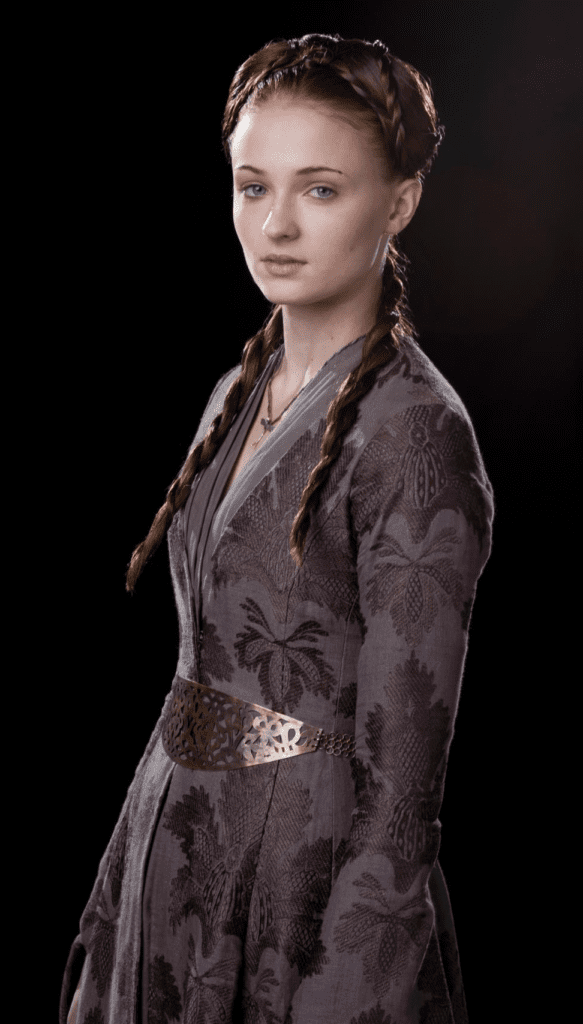

Northern braids are practical and simple, designed to withstand the cold and harsh conditions of the North. These braids are often worn by women who need their hair to be secure and out of the way, reflecting the no-nonsense attitude of the Northerners. The braids are typically tight and functional, making them ideal for both daily chores and the rigors of life in the North.
Sansa Stark, in the early parts of the series, is frequently seen wearing these simple Northern braids. As a young girl in Winterfell, her hairstyle reflects her sheltered upbringing and the practical nature of her home. Arya Stark also wears similar braids, though her styles become more disheveled as she embarks on her journey away from Winterfell. These braids are a common sight among Northern women, emphasizing their connection to the land and their resilience in the face of adversity.
Want to visit Winterfell? Click Here
4. Lannister Golden Curls
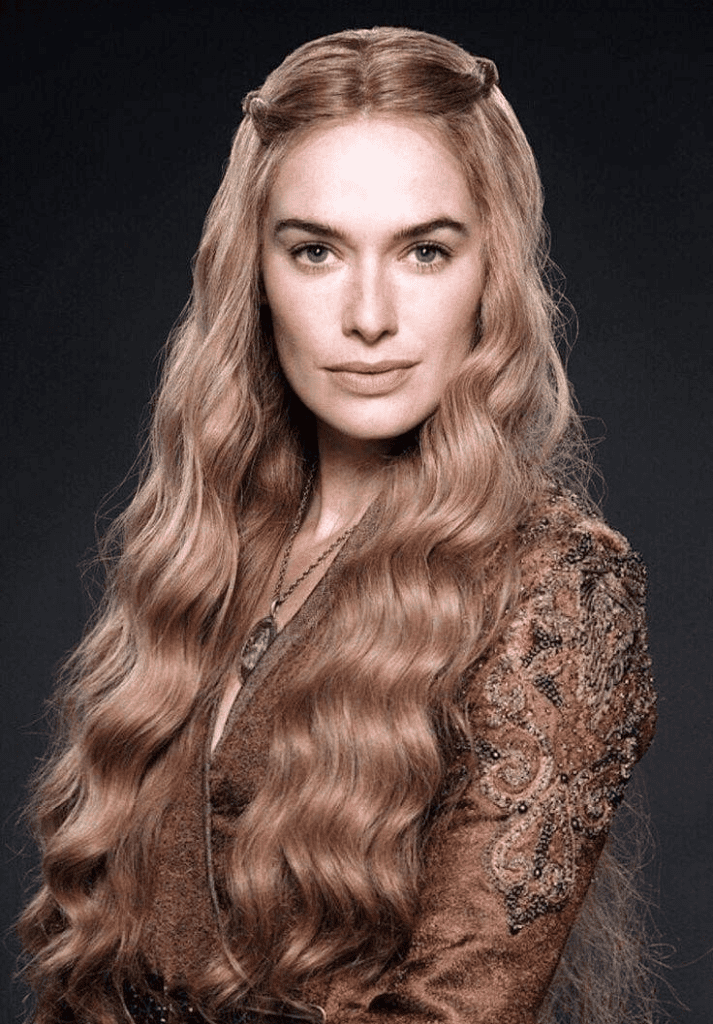

The Lannister golden curls are luxurious and meticulously styled, reflecting the wealth, power, and vanity of House Lannister. This hairstyle is characterized by rich, golden-blonde hair that falls in loose, elegant curls, often arranged in elaborate styles that highlight the wearer’s noble status. The golden color is a distinctive trait of the Lannisters, symbolizing both their physical beauty and their golden lion sigil.
Cersei Lannister is the most notable character associated with this hairstyle. Throughout the series, her golden curls are a symbol of her pride and her desire to maintain her image as the most beautiful and powerful woman in the Seven Kingdoms. Jaime Lannister, her twin brother, also shares this golden hair, though his shorter, more rugged style contrasts with Cersei’s opulence. The Lannisters’ golden curls are not just a family trait but a visual reminder of their status as one of the wealthiest and most powerful houses in Westeros.
5. Ironborn Knot


The Ironborn knot is a practical, no-nonsense hairstyle that reflects the harsh, seafaring life of the Ironborn. This style involves tightly pulling the hair back into a knot or bun, keeping it secure and out of the way during battle or while working on a ship. The Ironborn knot is more about functionality than aesthetics, embodying the utilitarian ethos of the Ironborn people who live by the words, “We Do Not Sow.”
Asha Greyjoy, known as Yara Greyjoy in the television adaptation, is one of the key characters associated with this hairstyle. Her hair is often depicted as tied back in a simple knot, reflecting her role as a warrior and a leader among the Ironborn. This hairstyle is common among both men and women in the Iron Islands, where practicality and survival take precedence over appearance. The Ironborn knot is emblematic of the rugged and unyielding nature of those who call the Iron Islands home.
6. Dornish Exotic Braids
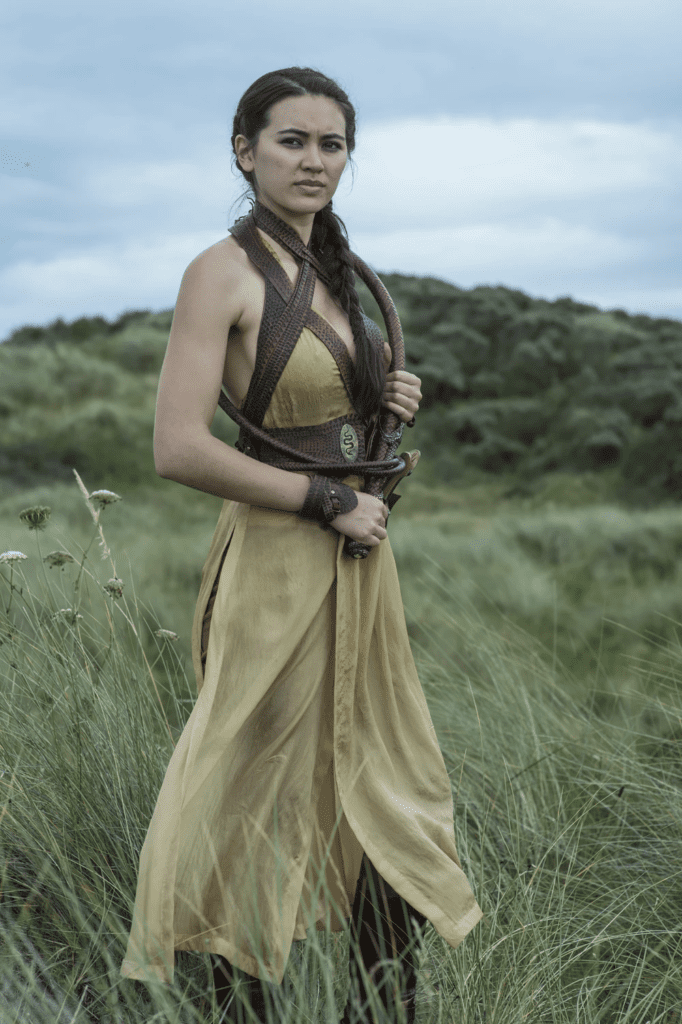

The Dornish exotic braids are elaborate and intricate, reflecting the vibrant and passionate culture of Dorne. These braids are often adorned with beads, ribbons, or other decorations, emphasizing the beauty and individuality of the wearer. The style is a mix of practicality and flair, suitable for the hot, arid climate of Dorne while also showcasing the wearer’s personal expression and status.
Nymeria Sand and Ellaria Sand are two prominent characters who wear these exotic braids. Nymeria’s braids are often described as dark and intricate, reflecting her fierce and determined nature. Ellaria’s braids, on the other hand, are more relaxed and flowing, symbolizing her seductive and free-spirited personality. The Sand Snakes, the daughters of Oberyn Martell, all wear variations of these braids, each style reflecting their unique personalities and skills. These braids are not only a fashion statement but also a reflection of the diverse and complex identities of Dornish women.
7. Queenly Crown Braids


Queenly crown braids are intricate hairstyles designed to resemble a crown, symbolizing royalty and power. These braids are carefully woven and wrapped around the head, creating a regal and sophisticated look. The style is both elegant and commanding, befitting a queen or noblewoman who wishes to project authority and grace.
Margaery Tyrell is often seen wearing crown braids, particularly in the later seasons of the television adaptation. Her hairstyle reflects her role as queen and her ambition to secure her place in the royal court. Sansa Stark also adopts crown braids when she is in King’s Landing, mimicking the styles of the Southern nobility as she learns to navigate the dangerous political landscape. These braids are a common sight among noblewomen in the South, where appearance is closely tied to status and power.
8. Wildling Loose Hair


Wildling loose hair is a common hairstyle among the Free Folk, reflecting their untamed and free-spirited nature. This style involves wearing the hair long and loose, often left to flow naturally without much styling. The Wildlings, who live beyond the Wall in the harsh and unforgiving North, value freedom and individuality, and their hairstyles reflect this ethos. The lack of formal styling signifies their rejection of the social norms and hierarchies that dominate life south of the Wall.
9. Stark Men’s Simple Haircuts


Stark men’s simple haircuts are practical and unadorned, reflecting the no-nonsense attitude of the Stark family and the harsh realities of life in the North. These haircuts are typically short and straightforward, with little attention given to styling or fashion. The simplicity of the haircut is a reflection of the Stark family’s values—honor, duty, and loyalty—where outward appearances are less important than the actions and character of the individual.
Eddard Stark, the patriarch of House Stark, is the quintessential example of this hairstyle. His short, utilitarian haircut mirrors his approach to life—focused on duty, honor, and the well-being of his family. Jon Snow, Ned’s son, also sports a similar haircut throughout much of the series, reflecting his Stark upbringing and his commitment to the values instilled in him by his father. The other male members of the Stark family, including Robb Stark and Bran Stark, also adhere to this simple style, which is well-suited to the practical and often dangerous life in the North.
10. Martell Curly Locks
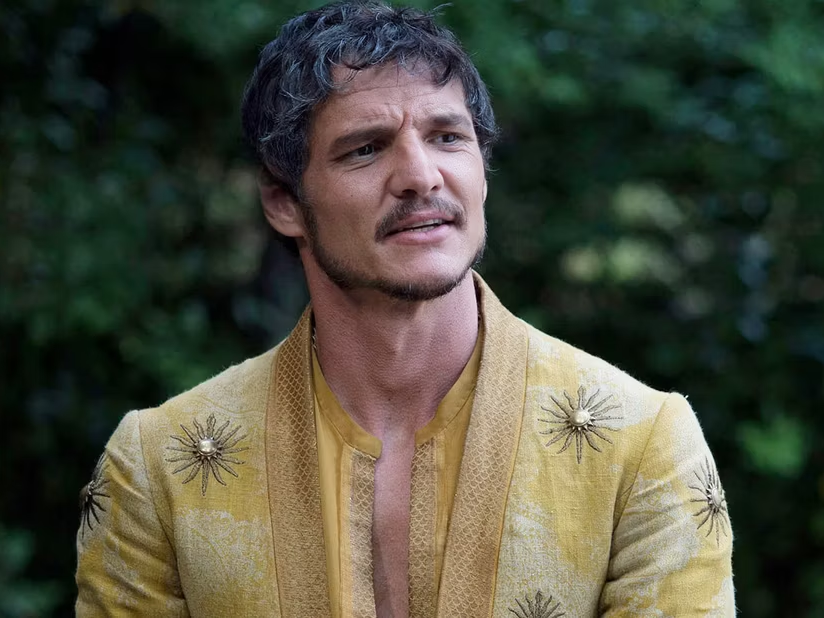

The loose, curly locks associated with House Martell are a reflection of the house’s fiery and passionate nature. This hairstyle is characterized by natural curls that are often left to flow freely, symbolizing the Martells’ connection to the hot, sun-soaked lands of Dorne. The curls are a celebration of natural beauty, with an emphasis on letting the hair’s natural texture shine through. The style is both practical for the warm climate and a statement of individuality and confidence.
Oberyn Martell, known as the Red Viper, is one of the most iconic characters associated with this hairstyle. His loose, curly hair complements his vibrant personality and his reputation as a skilled and dangerous fighter. Arianne Martell, his niece and heir to Dorne, also wears her hair in loose curls, reflecting her strong will and her determination to assert her place in the male-dominated world of Westerosi politics. The Martell curly locks are a signature style of the Dornish people, symbolizing their unique culture and their fierce independence.
11. Eyrie’s Windswept Locks


The windswept locks of the inhabitants of the Eyrie are a practical and distinctive hairstyle that reflects the harsh, windy conditions of this mountain stronghold. These locks are often left to fall naturally, with the wind playing a significant role in their appearance. The style is characterized by its unkempt, tousled look, which is less about fashion and more about adapting to the environment. The windswept locks are a direct result of living in a place where the weather is a constant force to be reckoned with.
Lysa Arryn, the Lady of the Eyrie, and her son, Robin Arryn, are the primary characters associated with this hairstyle. While their appearances are often more notable for their pale skin and slightly sickly demeanor, the windswept nature of their hair is a reflection of their isolated and somewhat precarious existence in the Eyrie. The castle’s high altitude and exposure to the elements mean that maintaining elaborate hairstyles is neither practical nor prioritized. Instead, the windswept locks become a symbol of the harsh realities of life in the Eyrie.
12. R’hllor Priestess Fire-Kissed Hair


The fire-kissed hair of the priestesses of R’hllor is a distinctive and mystical hairstyle that reflects their deep connection to the Lord of Light. This hairstyle is characterized by its red or flame-colored appearance, often described as striking and otherworldly. The hair is typically worn loose and flowing, symbolizing the free and unrestrained nature of the fire that they worship. The vivid color and dramatic style of their hair are key elements of their identity as servants of a powerful and often fearsome deity.
Melisandre, the Red Priestess, is the most prominent character associated with this hairstyle. Her fiery red hair is one of her most defining physical traits, enhancing her aura of mystery and power. Melisandre’s hair is often depicted as glowing or shimmering, reflecting her connection to the divine fire of R’hllor. The dramatic and unearthly quality of her hair, combined with her prophetic abilities and magical powers, makes her a formidable presence in the series. Other priestesses of R’hllor, though less prominently featured, also share this characteristic, reinforcing the idea that their hair is a mark of their devotion and their role as intermediaries between the mortal world and the divine.
Modern Interpretations and Styling Tips
Inspired by these iconic styles? Here’s how you can bring a touch of Westeros into your everyday life:
- Targaryen Waves: Achieve Daenerys’s flowing waves by using a curling wand and a shine spray. This ethereal style is perfect for special occasions or when you want to channel your inner queen.
- Dothraki Braids: Emulate the fierce Dothraki warrior style by starting with clean, dry hair and applying a texturizing spray for grip. Divide the hair into sections and create tight, intricate braids. Secure each braid with clear elastics and, for an authentic look, weave in leather cords or small beads. This style is perfect for festivals or a bold, everyday statement.
- Lannister Curls: For voluminous, luxurious curls like those of Cersei Lannister, apply a heat protectant to dry hair. Use a large-barrel curling iron to curl sections of hair, holding each curl for a few seconds before releasing. Once all the hair is curled, gently brush through the curls with a paddle brush to soften and add volume. Finish with a strong hold hairspray to maintain the look, perfect for a glamorous night out.
- Ironborn Knot: Channel the rugged practicality of the Ironborn with a sleek, high bun or knot. Start by gathering the hair into a high ponytail, then twist the hair into a knot and secure it with bobby pins. This style is ideal for a day when you need your hair out of your face, whether you’re at the gym or tackling a busy workday.
- Queenly Crown Braids: Create a regal look by weaving your hair into a crown braid. Start by parting your hair in the middle, then braid each side into a French or Dutch braid, securing the ends with elastics. Wrap the braids over your head, pinning them in place to form a crown. Add decorative pins or flowers for a royal touch. This style is perfect for weddings or special occasions where you want to feel like a queen.
Symbolism and Character Development Through Hair
Hair in A Song of Ice and Fire is more than just a fashion statement—it’s a storytelling device that reflects the personal journeys and transformations of the characters.
- Cersei Lannister’s Hair Journey: Cersei’s golden curls are emblematic of her pride, beauty, and status as Queen. However, her hair becomes a crucial symbol of her downfall when it is forcibly shaved during her walk of atonement. This moment marks a significant shift in her character, from the powerful and vain queen to a woman stripped of her dignity. Yet, when she regrows her hair into a shorter, more severe style, it represents her hardened resolve and the transformation into a more ruthless ruler. This change in hairstyle mirrors her psychological transformation, showcasing how hair can symbolize deeper narrative shifts in ASOIAF.
- Sansa Stark’s Evolution: Sansa Stark’s hair is a visual representation of her personal growth throughout the series. Starting with simple Northern braids reflecting her innocence and naivety, her hairstyles become increasingly elaborate as she navigates the treacherous politics of King’s Landing. When she mimics the hairstyles of Cersei Lannister and Margaery Tyrell, it signifies her attempt to fit in and survive in a dangerous environment. Sansa’s eventual return to simpler styles as she embraces her Stark identity symbolizes her journey towards self-discovery and empowerment.
- Daenerys Targaryen’s Targaryen Waves: Daenerys’s flowing silver-gold hair is not only a physical marker of her Targaryen lineage but also a symbol of her destiny as a ruler. Her loose, free-flowing waves reflect her connection to her ancestors and her claim to the throne. As Daenerys evolves from a timid girl to a formidable leader, her hair remains a consistent symbol of her heritage and her role as the last Targaryen in the quest for the Iron Throne.
- Arya Stark’s Practical Styles: Arya Stark’s hair is always practical, reflecting her no-nonsense personality and her need to adapt to her circumstances. When she cuts her hair short to disguise herself as a boy, it symbolizes her shedding of her noble identity and embracing a life on the run. Arya’s hairstyles are always tied to her survival, and her lack of concern for traditional beauty standards underscores her focus on more critical matters, like revenge and survival.
Conclusion
In the world of A Song of Ice and Fire, hairstyles are more than just an aesthetic choice—they are a reflection of identity, power, and transformation. Whether it’s the warrior braids of the Dothraki or the regal waves of the Targaryens, these styles offer deep insights into the characters and cultures of Westeros and beyond. By exploring these iconic hairstyles, we can not only gain a deeper understanding of the series but also find inspiration for our own looks.
So why not channel your inner queen, warrior, or rogue today? Experiment with these styles and bring a touch of Westeros into your everyday life.
Additional Resources and References
For more detailed cultural analysis, check out Lady Gwynhyfvar’s blog, where she delves deep into the cultural significance of various elements in A Song of Ice and Fire.
For a critical take on the Dothraki culture and its representation, visit A Collection of Unmitigated Pedantry.
Stay tuned to “LooksandCurls.com” for more articles on hairstyles inspired by literature, film, and history. Don’t forget to share your ASOIAF-inspired looks with us on social media!



